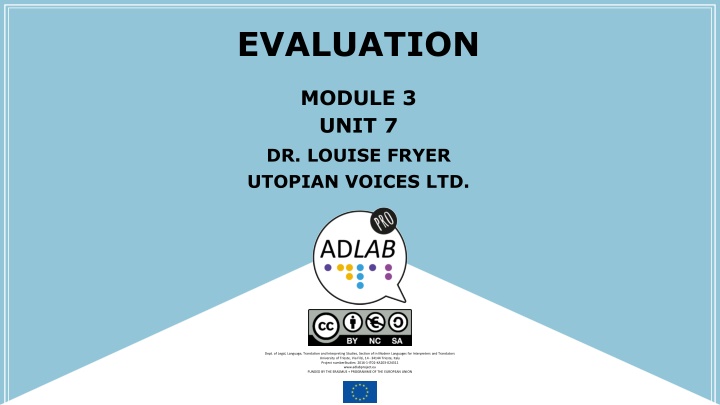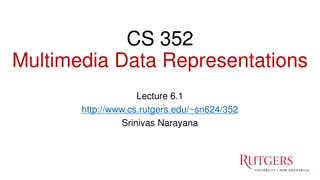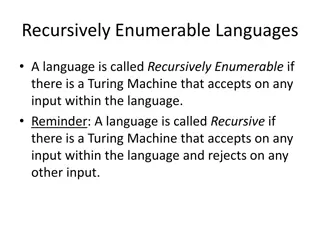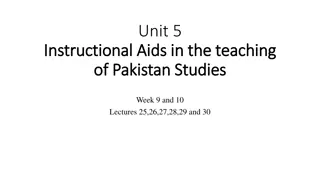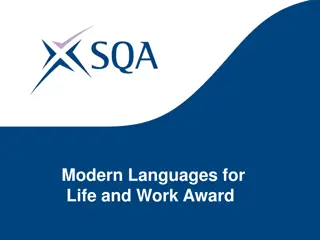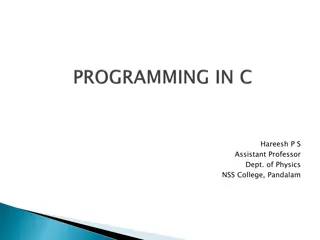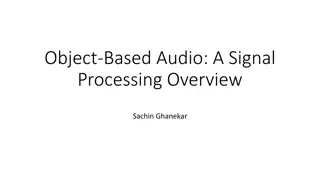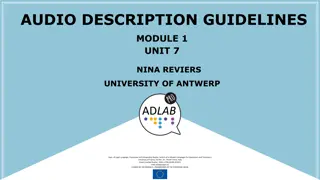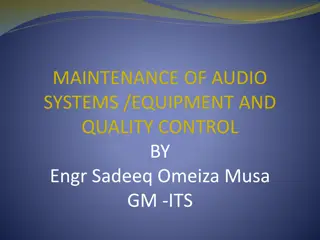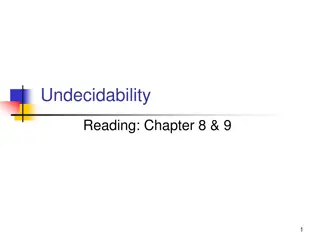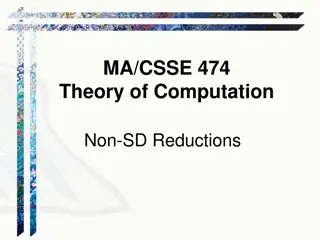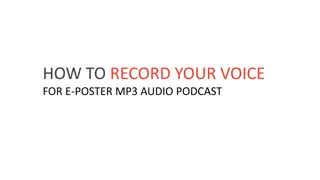Evaluation Criteria and Best Practices for Audio Description in Modern Languages Studies
Evaluation criteria and best practices for Audio Description (AD) in modern languages studies are outlined in this comprehensive content. It covers the purpose of AD, types of evaluation (formative and summative), training for AD students and professionals, embedded evaluation, Schjoldager criteria, factors affecting comprehensibility and delivery, and common deviations from good delivery. Language evaluations focusing on word choice and order are also discussed.
Download Presentation

Please find below an Image/Link to download the presentation.
The content on the website is provided AS IS for your information and personal use only. It may not be sold, licensed, or shared on other websites without obtaining consent from the author.If you encounter any issues during the download, it is possible that the publisher has removed the file from their server.
You are allowed to download the files provided on this website for personal or commercial use, subject to the condition that they are used lawfully. All files are the property of their respective owners.
The content on the website is provided AS IS for your information and personal use only. It may not be sold, licensed, or shared on other websites without obtaining consent from the author.
E N D
Presentation Transcript
EVALUATION MODULE 3 UNIT 7 DR. LOUISE FRYER UTOPIAN VOICES LTD. Dept. of Legal, Language, Translation and Interpreting Studies, Section of in Modern Languages for Interpreters and Translators University of Trieste, Via Filzi, 14 - 34144 Trieste, Italy Project numberStudies: 2016-1-IT02-KA203-024311 www.adlabproject.eu FUNDED BY THE ERASMUS + PROGRAMME OF THE EUROPEAN UNION
PURPOSE OF AD To make everything that is available to the sighted audience available to the PSL. To enable users to follow the story. To give AD users an equivalent experience to that of the sighted audience.
EVALUATION TYPES Formative aims to improve final result. Summative assesses the final result.
TRAINING The AD student. The AD professional.
VOCALEYES Embedded Evaluation. Annual assessment.
SCHJOLDAGER CRITERIA Schjoldager used the following criteria to evaluate performance: Comprehensibility. Delivery. Language. Coherence and plausibility. Loyalty.
COMPREHENSIBILITY AD reception research shows that comprehensibility and enjoyment/engagement are not related (Fryer & Freeman, 2014; Walczak & Fryer, 2017a, 2017b). The importance of comprehensibility depends on the purpose.
DELIVERY Comprehensibility has been coupled with delivery. Not only does lack of vocal clarity (mumbling) affect comprehensibility, but segmentation (the gaps between words and phrases) and prosody (including intonation, pitch and pace) all help to shape meaning.
DEVIATIONS FROM GOOD DELIVERY Inarticulate speech. Pauses. Hesitation. False starts. Irritating noises. Repetition and excessive self-correction. Unconvincing voice quality and monotonous intonation.
LANGUAGE EVALUATIONS Word choice. Word order (e.g. She extinguishes the candles, followed by her husband). Followed by her husband, she extinguishes the candles).
INACCURACY IN AD Misnaming something. Using an inappropriate verb (walks instead of run). Misreporting (saying something is there when it s not). Omission/censorship (not saying something s there when it is).
AD USERS Accuracy. Density (neither too little nor too much). Delivery (engaged and engaging). Technical aspects e.g. sound quality.
EVALUATION SHEET Available on the ADLAB PRO website. To evaluate your peers performance. To evaluate your own performance.
PEER EVALUATION Assume good intent. Remember they re not criticising you. Their aim is to improve the description for the benefit of AD users. Giving feedback, be specific, honest and kind. We re all human. We all make mistakes.
EVALUATION MODULE 3 UNIT 7 DR. LOUISE FRYER UTOPIAN VOICES LTD. Dept. of Legal, Language, Translation and Interpreting Studies, Section of in Modern Languages for Interpreters and Translators University of Trieste, Via Filzi, 14 - 34144 Trieste, Italy Project numberStudies: 2016-1-IT02-KA203-024311 www.adlabproject.eu FUNDED BY THE ERASMUS + PROGRAMME OF THE EUROPEAN UNION
REFERENCES Fryer, L. (forthcoming). Quality Assessment in Audio description: Lessons learned from Interpreting. In E. Huertas-Barros, S. Vandepitte and E. Iglesias-Fern ndez (Eds.) Quality Assurance and Assessment Practices in Translation and Interpreting. IGI- Global publications.
The preparation of this presentation was supported by ADLAB PRO (Audio Description: A Laboratory for the Development of a New Professional Profile), financed by the European Union under the Erasmus+ Programme, Key Action 2 Strategic Partnerships, Project number:2016-1-IT02-KA203-024311.
The information and views set out in this presentation are those of the authors and do not necessarily reflect the official opinion of the European Union. Neither the European Union institutions and bodies nor any person acting on their behalf may be held responsible for the use which may be made of the information contained therein.
